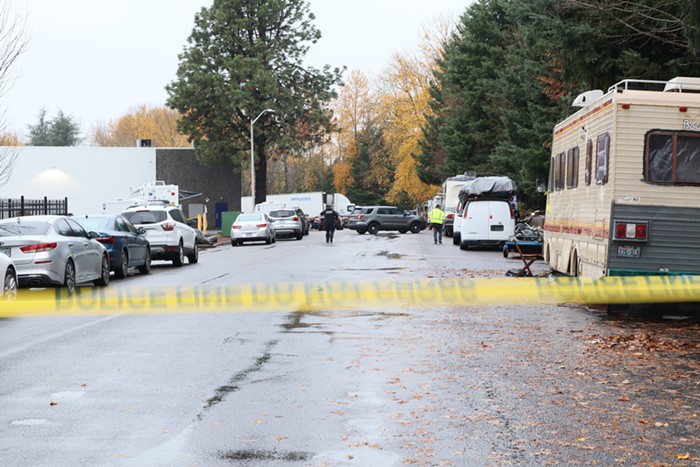ONCE AGAIN, the city is taking a stab at redeveloping the Rose Quarter. Last Thursday, October 25, Portland City Council signed off on the North/Northeast Quadrant Plan and a related plan to expand Interstate 5.
But while much of the changes involve long-range, feel-good goals for job growth and development in the beleaguered Rose Quarter, Lloyd District, and Lower Albina neighborhoods, the plans to widen I-5 through the area are controversial.
The stretch of I-5 through Albina and the Rose Quarter is the most dangerous in the state, with 120,000 cars passing through every day and nearly 100 crashes a year.
Rebuilding the 50-year-old freeway is a massive task that will require years of construction to tear down five freeway overpasses, rebuild four, rework onramps, build better bike and pedestrian facilities, and create a concrete "lid" over the freeway that can support new buildings. The total cost: $400 million. To put that in perspective, it's more than double the cost of the entire Eastside Streetcar Loop.
Outspoken neighbors would rather the city focus on business and bike-pedestrian development, rather than the freeway widening.
"I am for passing the plans, just because it creates certainty around the project, but not for funding the project," says Eliot Neighborhood Association Chair Allan Rudwick, who has voiced the fear that if money runs short on the project, the crosswalks and bike lanes will be the first promises axed. ["The $400 Million Lane," News, June 14]
City planners have reiterated that the freeway and neighborhood-friendly developments are a package deal: They need to be built together to get federal funds.
As for the "feel-good" aspect, the North/Northeast Quadrant Plan lays out the goal of adding 10,000 jobs and developing 5,000 housing units in the area by 2035.
As the area gets denser, the city wants to decrease reliance on cars. Right now, people driving alone make up 56 percent of trips to the area; the city aims to cut that to 25 percent. Hand-in-hand with making the area nicer for people who walk or bike, the city wants to double the amount of street-facing ground-floor retail spaces in the area (as opposed to keeping them hidden inside Lloyd Center or office buildings).
The goals are similar for Lower Albina: adding 1,000 jobs (but no housing) and doubling the number of non-solo car commuters.
Of course, the plans for dense development are ironic given the history of the area: What's now the sprawling Rose Quarter once was the bustling heart of Portland's African American neighborhood—until the city razed 1,100 homes in the 1960s to build Memorial Coliseum and I-5 itself.



















